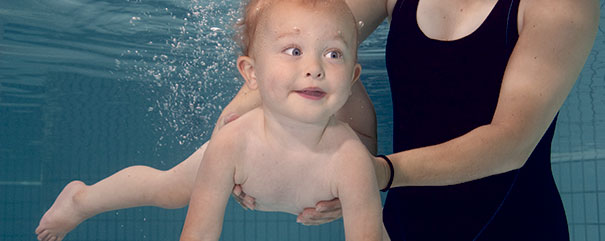
For most children, swimming and exercise are mutually exclusive activities. Swimming is fun, exercise is not. Luckily, this common childhood misconception can be used by parents to the benefit of their sons’ and daughters’ physical development. Even though children associate the swimming pool with friends, splashing and playtime, swimming is in fact an activity that improves all aspects of physical fitness and aides in healthy childhood growth. Routine exercise in which children happily participate helps them develop into fit adults and reduces the risk of increasingly common children’s health problems like diabetes and obesity. Swimming improves strength, coordination and balance because of its ambidextrous qualities. Furthermore, swimming is an activity that a child never outgrows. Water sports remain as appropriate for a two year old as they are for a 92 year old. Some babies swim before they walk.
Fitness & Health
Not only is fitness important to physical health, but it plays a critical role in mental health as well. A 2002 study revealed the codependency of all elements of an individual’s health. The human body functions holistically. That is, if a child is in poor physical shape, his or her mental capacities suffer. Thus, physical development in children is part and parcel of children’s intellectual and emotional development. Regular exercise boosts learning capacity, elevates mood and encourages self-reliance, in addition to its countless physical benefits.
Overall physical fitness is comprised of four components: cardiovascular endurance, muscular endurance, muscular strength and flexibility. Some adults develop exercise routines intended to improve each of these categories. Stretching begins a workout session, followed by aerobic activity and weight training. This type of routine, however, is inappropriate for small children who lack the patience, motivation and skills for such exercise.
Swimming & Health
Swimming is one of the few physical activities that benefits all four areas of fitness. Because swimming requires use of the whole body, the heart continuously pumps blood to the arms and legs. This increases cardiovascular endurance and improves circulation. Additionally, the deep, rhythmic breathing that swimming requires improves respiratory functioning and strengthens the lungs. Pressure and water resistance provides a workout for the entire body, resulting in overall muscular toning for endurance and strength, while different swimming strokes offer a range of movements that increase flexibility.
Recreational swimming also helps children develop habits that can be sustained as they age. Because water supports the majority of an individual’s weight, swimming is one of the lowest impact sports available. Minimal pressure is exerted on the joints, which protects individuals from injury and eliminates joint discomfort. Unlike jogging or cycling, swimming remains a painless, harmless experience no matter its frequency or duration. Babies and toddlers can reap the benefits of exercise found in learning to swim, under the guise of fun in the water. In turn, as they grow up with a love of the water, and a comfort of knowing how to swim, children are equipped with a outlet of exercise that can be for a lifetime.


Conversations